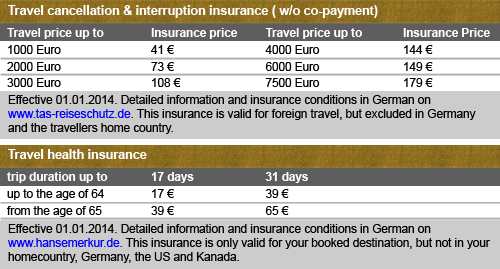Tokyo Live / Tokyo Live XL
Tokyo Live
Program
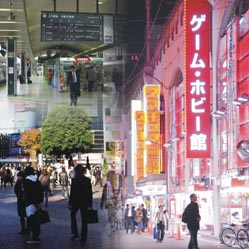
Day 1: Off to the land of the rising sun
Departure from Frankfurt/London in the afternoon towards the international airport Tokyo-Narita.
Day 2: Tradition & Postmodernism - Asakusa Kannon Temple
Arrival in Tokyo. Your tour guide escorts you to the hotel in Asakusa, one of the classic centres of the Japanese capital. Later on, we will go on a sightseeing walk to the Thundergate (Kaminari-Mon) that is not far from our hotel. Beneath its red lantern that has the Chinese sign for „thunder“ on it, we stroll alongside the statues of the wind and thunder god to the Nakamise. On this traditional shopping street you get an impression of the variety of Japanese products and typical delicacies.
At the end of „Nakamise“ you will across the Asakusa-Kannon Temple complex with the Senso-ji in its centre. The construction of the temple that was finished in 638 AD is based on the legend of two fishermen who found a Kannon statue in their fishing net.
Day 3: Inside the dragon’s domicile
After your first night in Tokyo you start this morning with a visit to the Ueno Park, Japan’s first inner-city park. There are a lot of sights worth seeing, for instance the octagonal Bentendo Temple that is located amidst a picturesque island in the Shinobazu Lake or the nearby Toshogu Shrine whose entrance gate is decorated with two golden dragons that look so lively that it is said that they awake at night and drink out of the nearby lake. Instead of a walk in the park you have also the possibility to visit the Tokyo National museum that is also situated in the park.
Eiffel tower, Rainbow Bridge and Venus Fort
In the afternoon an excursion to the Odaiba quarter in the harbour area is planned. You walk alongside the esplanade of Tokyo‘s only sand beach towards the Fuji-TV building. On its forecourt you will encounter three examples of the Japanese pleasure to imitate: the 1956 built Tokyo-Tower that is modeled on the Eiffel tower, the Rainbow Bridge, a tribute to the Golden Gate Bridge and Tokyo’s Statue of Liberty. After the visit to Toyota City Showcase and the Venus Fort, a shopping mall in the style of the Italian harbour town Venice, you have the opportunity to get on the big Ferris wheel and to marvel from above at the breathtaking scenery of this quarter that is so similar to an amusement park.
Mega crossroads and shopping
After leaving Odaiba, you head to Ginza, Japan’s most prestigious but also most expensive shopping street. During the Shogun era it was a place where silver coins were minted and nowadays it is the place where the “palaces” of the Japanese consumer culture like Mitsukoshi or Takashimaya are situated. Maybe you want to purchase a postcard in one of the most exclusive paper shops of the country. On the biggest crossroads of the shopping mile up to 10000 people change the side of the road at the same time during rush hour when the light is green.
Day 4: The biggest fish market and the hot quarter
On this day of your Tokyo city tour you are going to deepen the impressions you had of this many-sided city. The day starts early with a visit to Tsukiji, the world’s biggest fish market. This is the place where traditionally all the country’s draught is handled. You like Sushi? That’s good, because here you get the freshest that you ever ate.
Shibuya and Harajuku
After the fish market we want to show you Harajuku, the youthful quarter of the Japanese metropolis. You walk past the fancy-clothed teenagers and enter the Meiji Shrine that was once built in honor of the Tenno Meiji, by an imposing wooden gate. It is situated in Yoyogi Park, the capital’s green lung. Take a walk to the centre of the shrine that is considered a classic example of Shinto shrine architecture. Here you can get the famous Omamori, lucky charms that are supposed to increase safety in road traffic. Leaving the Meiji Shrine behind, we walk along the popular teenager meeting points to get to Shibuya where we will cross the busiest junction of the city. In the vicinity is located the statue of Hachiko, a loyal dog that waited exactly on this spot for his master even long after his death. Later on you drive to Shinjuku where you have the opportunity to stroll in the busy financial district to Tocho, the Tokyo city administration building. From its observation deck on the 45th floor you will have a good view onto Tokyo’s evening setting. Enjoy the panorama!
Day 5: Kamakura – Samurai tradition
On the 5th day of your city trip you are going on an excursion to Kamakura, the first Shogun capital. 19 Shinto shrines and 65 Buddhist temples testify to the former greatness of this city that was conceived by Minamoto-no-Yoritomo. Most of the temples can be attributed to the school of Zen Buddhism. You visit Kamakura Daibutsu, the Great Buddha statue that will leave a lasting impression. It was casted out of 124 tons of bronze in 1252 by Ono Goroemon. The 13,5m tall statue stands outdoors because the hall that was once built around it was destroyed several times by fire and earthquakes. So nowadays the forested hills constitute the scenic background for this impressive statue. Subsequently you visit Hasedera Temple where you will have a magnificent view onto the sea from its famous exposed terrace.
Hakone National Park & Fuji
Next stop is Hakone National Park where we will go to Lake Ashi. A cable car brings you to Mt. Komagatake where you will be able to enjoy the famous panoramic view onto „Fuji-san“, like Japanese call it reverently. The venerable mountain is considered as holy by many Japanese people.
Day 6: Nikko – the Great Shogun’s mausoleum
Your second excursion brings you to the town Nikko in the mountainous Tochigi prefecture. On site you will look around the UNESCO World Cultural Heritage Site of the Toshogu Shrine complex that is home to the grave of Tokugawa Ieyasu, the first Shogun in the Edo era. You will experience the glory of the ancient epoch by walking through the Toshogu Shrine that was built starting 1636 under the administration of the architect Kora by 455000 workers, notably 23000 beatgold makers according to reports. Nearby is the famous portrait of the three monkeys reminding not to say, see or hear anything bad. By going inside the Rinnoji Temple you enter Nikko’s oldest temple that was founded in 1200 by a Buddhist priest. Since this time it represents a religious centre for Buddhism and Shintoism. On a visit to Futara Shrine you encounter the famous „ghost lantern“. Got scared? Then you share the fate with the most courageous Samurais. Furthermore a visit to the Taiyuin mausoleum is planned. This edifice was built by Ieyasu’s grandchild, the third Tokugawa Shogun Iemitsu who built it to honor his grandfather after his death. At the end of this eventful day you will certainly agree that Nikko, which means “sunray”, really lives up to its name.
Day 7: Goodbye Tokyo
In the morning you have the time to say goodbye to Tokyo. Benefit from the free time by making a last shopping expedition or a walk before you get transferred to the airport in the afternoon.
Day 8: Returning home
In the morning you will arrive in Frankfurt/London.
Tokyo Live XL
(Tokyo extension 11-days trip)
Day 1: Off to the land of the rising sun
Departure from Frankfurt/London in the afternoon towards the international airport Tokyo-Narita.
Day 2: Tradition & Postmodernism - Asakusa Kannon Temple
Arrival in Tokyo. Your tour guide escorts you to the hotel in Asakusa, one of the classic centres of the Japanese capital. Later on, we will go on a sightseeing walk to the Thundergate (Kaminari-Mon) that is not far from our hotel. Beneath its red lantern that has the Chinese sign for „thunder“ on it, we stroll alongside the statues of the wind and thunder god to the Nakamise. On this traditional shopping street you get an impression of the variety of Japanese products and typical delicacies.
At the end of „Nakamise“ you will across the Asakusa-Kannon Temple complex with the Senso-ji in its centre. The construction of the temple that was finished in 638 AD is based on the legend of two fishermen who found a Kannon statue in their fishing net.
Day 3: Inside the dragon’s domicile
After your first night in Tokyo you start this morning with a visit to the Ueno Park, Japan’s first inner-city park. There are a lot of sights worth seeing, for instance the octagonal Bentendo Temple that is located amidst a picturesque island in the Shinobazu Lake or the nearby Toshogu Shrine whose entrance gate is decorated with two golden dragons that look so lively that it is said that they awake at night and drink out of the nearby lake. Instead of a walk in the park you have also the possibility to visit the Tokyo National museum that is also situated in the park.
Eiffel tower, Rainbow Bridge and Venus Fort
In the afternoon an excursion to the Odaiba quarter in the harbour area is planned. You walk alongside the esplanade of Tokyo‘s only sand beach towards the Fuji-TV building. On its forecourt you will encounter three examples of the Japanese pleasure to imitate: the 1956 built Tokyo-Tower that is modeled on the Eiffel tower, the Rainbow Bridge, a tribute to the Golden Gate Bridge and Tokyo’s Statue of Liberty. After the visit to Toyota City Showcase and the Venus Fort, a shopping mall in the style of the Italian harbour town Venice, you have the opportunity to get on the big Ferris wheel and to marvel from above at the breathtaking scenery of this quarter that is so similar to an amusement park.
Mega crossroads and shopping
After leaving Odaiba, you head to Ginza, Japan’s most prestigious but also most expensive shopping street. During the Shogun era it was a place where silver coins were minted and nowadays it is the place where the “palaces” of the Japanese consumer culture like Mitsukoshi or Takashimaya are situated. Maybe you want to purchase a postcard in one of the most exclusive paper shops of the country. On the biggest crossroads of the shopping mile up to 10000 people change the side of the road at the same time during rush hour when the light is green.
Day 4: The biggest fish market and the hot quarter
On this day of your Tokyo city tour you are going to deepen the impressions you had of this many-sided city. The day starts early with a visit to Tsukiji, the world’s biggest fish market. This is the place where traditionally all the country’s draught is handled. You like Sushi? That’s good, because here you get the freshest that you ever ate.
Shibuya and Harajuku
After the fish market we want to show you Harajuku, the youthful quarter of the Japanese metropolis. You walk past the fancy-clothed teenagers and enter the Meiji Shrine that was once built in honor of the Tenno Meiji, by an imposing wooden gate. It is situated in Yoyogi Park, the capital’s green lung. Take a walk to the centre of the shrine that is considered a classic example of Shinto shrine architecture. Here you can get the famous Omamori, lucky charms that are supposed to increase safety in road traffic. Leaving the Meiji Shrine behind, we walk along the popular teenager meeting points to get to Shibuya where we will cross the busiest junction of the city. In the vicinity is located the statue of Hachiko, a loyal dog that waited exactly on this spot for his master even long after his death. Later on you drive to Shinjuku where you have the opportunity to stroll in the busy financial district to Tocho, the Tokyo city administration building. From its observation deck on the 45th floor you will have a good view onto Tokyo’s evening setting. Enjoy the panorama!
Day 5: Kamakura – Samurai tradition
On the 5th day of your city trip you are going on an excursion to Kamakura, the first Shogun capital. 19 Shinto shrines and 65 Buddhist temples testify to the former greatness of this city that was conceived by Minamoto-no-Yoritomo. Most of the temples can be attributed to the school of Zen Buddhism. You visit Kamakura Daibutsu, the Great Buddha statue that will leave a lasting impression. It was casted out of 124 tons of bronze in 1252 by Ono Goroemon. The 13,5m tall statue stands outdoors because the hall that was once built around it was destroyed several times by fire and earthquakes. So nowadays the forested hills constitute the scenic background for this impressive statue. Subsequently you visit Hasedera Temple where you will have a magnificent view onto the sea from its famous exposed terrace.
Hakone National Park & Fuji
Next stop is Hakone National Park where we will go to Lake Ashi. A cable car brings you to Mt. Komagatake where you will be able to enjoy the famous panoramic view onto „Fuji-san“, like Japanese call it reverently. The venerable mountain is considered as holy by many Japanese people.
Day 6: Nikko – the Great Shogun’s mausoleum
Your second excursion brings you to the town Nikko in the mountainous Tochigi prefecture. On site you will look around the UNESCO World Cultural Heritage Site of the Toshogu Shrine complex that is home to the grave of Tokugawa Ieyasu, the first Shogun in the Edo era. You will experience the glory of the ancient epoch by walking through the Toshogu Shrine that was built starting 1636 under the administration of the architect Kora by 455000 workers, notably 23000 beatgold makers according to reports. Nearby is the famous portrait of the three monkeys reminding not to say, see or hear anything bad. By going inside the Rinnoji Temple you enter Nikko’s oldest temple that was founded in 1200 by a Buddhist priest. Since this time it represents a religious centre for Buddhism and Shintoism. On a visit to Futara Shrine you encounter the famous „ghost lantern“. Got scared? Then you share the fate with the most courageous Samurais. Furthermore a visit to the Taiyuin mausoleum is planned. This edifice was built by Ieyasu’s grandchild, the third Tokugawa Shogun Iemitsu who built it to honor his grandfather after his death. At the end of this eventful day you will certainly agree that Nikko, which means “sunray”, really lives up to its name.
Day 7 – Day 9: Tokyo on your own
In these three days you have the opportunity to explore Tokyo on your own. Take your time and enjoy the atmosphere of this extraordinary metropolis. It will certainly not be difficult to find something that suits your taste because Tokyo has a lot to offer for everybody. As starting points you could use the places you already got to know in the past days – a good opportunity to deepen the impressions you had on the first days. Or you decide to discover and visit something completely new and let your adventurous spirit guide you. It does not matter what your preferences are, it will definitely be an unforgettable time.
Day 10: Farewell to Tokyo
You can use the morning to bid goodbye to your favourite places in Tokyo. Spend the last hours on a shopping expedition or on a walk through your favourite quarter before getting to the airport in the afternoon. Take a taxi from the hotel to Keisei Ueno Station and take the Keisei Skyliner Airport Express from there that brings you to the airport Narita. From there you fly back to Frankfurt/London.
Day 11: Back in Europe
In the morning you land in Frankfurt/London.
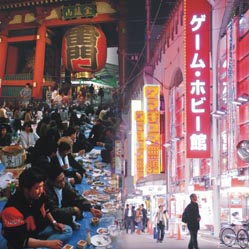
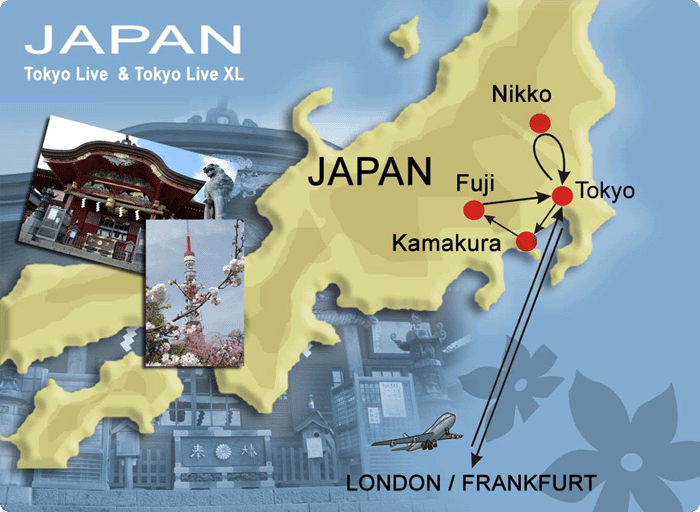
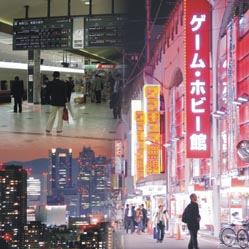 Features
Features
